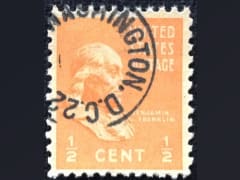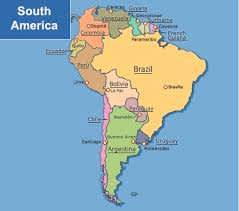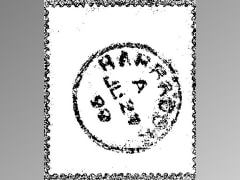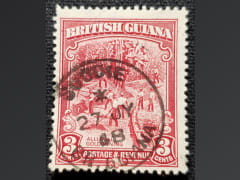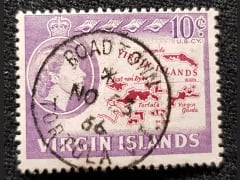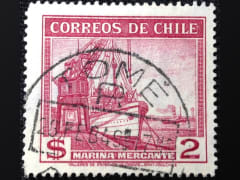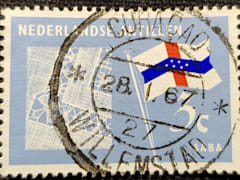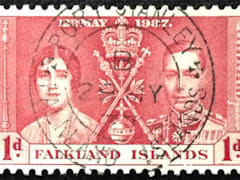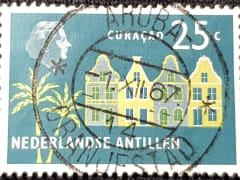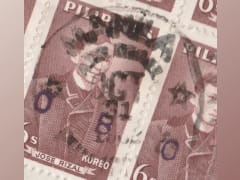CountryCanada
Canada
Town
Vananda
Cacellation Date
26 Jul 1945
Town Info
Van Anda, formerly spelled Vananda, is an unincorporated settlement on Texada Island in the northern Gulf of Georgia in British Columbia, Canada. It has a population of approximately 70 people. The surrounding region incorporates Blubber Bay and Gillies Bay.
Location
Black Page 32
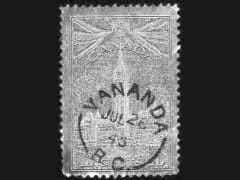
Canada
Town
Vancouver
Cacellation Date
21 Dec 1963
Town Info
Vancouver, a bustling west coast seaport in British Columbia, is among Canada’s densest, most ethnically diverse cities. A popular filming location, it’s surrounded by mountains, and also has thriving art, theatre and music scenes. Vancouver Art Gallery is known for its works by regional artists, while the Museum of Anthropology houses preeminent First Nations collections.
Location
Covers
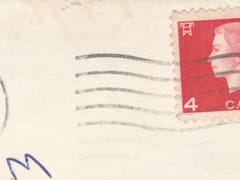
Canada
Town
Vancouver
Cacellation Date
20 Nov 1963
Town Info
Vancouver, a bustling west coast seaport in British Columbia, is among Canada’s densest, most ethnically diverse cities. A popular filming location, it’s surrounded by mountains, and also has thriving art, theatre and music scenes. Vancouver Art Gallery is known for its works by regional artists, while the Museum of Anthropology houses preeminent First Nations collections.
Location
Covers
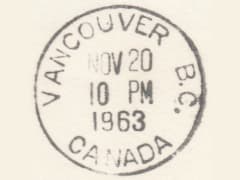
CountryCanal Zone
Canal Zone
Town
Balboa 1
Cacellation Date
25 Feb 1952
Town Info
The town of Balboa, founded by the United States during the construction of the Panama Canal, was named after Vasco Núñez de Balboa, the Spanish conquistador credited with discovering the Pacific Ocean. The name was suggested to the Canal Zone authorities by the Peruvian ambassador to Panama. Prior to being drained, filled and leveled by the U.S. Army Corps of Engineers, the hilly area north of Panama City was home to a few subsistence ranches and unused marshlands. The town of Balboa, like most towns in the Canal Zone, was served by Canal Zone Government–operated schools, post office, police and fire stations, commissary, cafeteria, movie theater, service center, bowling alley, and other recreational facilities and company stores. There were several schools in the area, including Balboa Elementary School, Balboa High School, and the private St. Mary's School. The town was also home to two private banks, a credit union, a Jewish Welfare Board, several Christian denomination churches, civic clubs (such as the Elks Club and the Knights of Columbus), a Masonic Lodge, a YMCA, several historic monuments, and a miniature Statue of Liberty donated by the Boy Scouts of America.
Location
On Piece
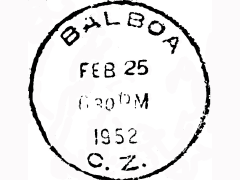
Canal Zone
Town
Balboa 2
Cacellation Date
Town Info
The town of Balboa, founded by the United States during the construction of the Panama Canal, was named after Vasco Núñez de Balboa, the Spanish conquistador credited with discovering the Pacific Ocean. The name was suggested to the Canal Zone authorities by the Peruvian ambassador to Panama. Prior to being drained, filled and leveled by the U.S. Army Corps of Engineers, the hilly area north of Panama City was home to a few subsistence ranches and unused marshlands. The town of Balboa, like most towns in the Canal Zone, was served by Canal Zone Government–operated schools, post office, police and fire stations, commissary, cafeteria, movie theater, service center, bowling alley, and other recreational facilities and company stores. There were several schools in the area, including Balboa Elementary School, Balboa High School, and the private St. Mary's School. The town was also home to two private banks, a credit union, a Jewish Welfare Board, several Christian denomination churches, civic clubs (such as the Elks Club and the Knights of Columbus), a Masonic Lodge, a YMCA, several historic monuments, and a miniature Statue of Liberty donated by the Boy Scouts of America.
Location
On-Piece
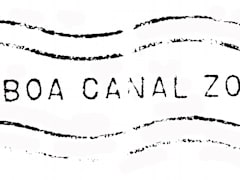
CountryJamaica
Jamaica
Town
Kingston
Cacellation Date
26 Jun 1892
Town Info
Kingston is the capital of the island of Jamaica, lying on its southeast coast. In the city center, the Bob Marley Museum is housed in the reggae singer’s former home. Nearby, Devon House is a colonial-era mansion with period furnishings. Hope Botanical Gardens & Zoo showcases native flora and fauna. Northeast of the city, the Blue Mountains are a renowned coffee-growing region with trails and waterfalls
Location
Black Page 24
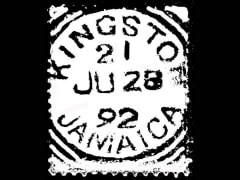
Jamaica
Town
Linstead
Cacellation Date
13 Nov 1951
Town Info
Linstead is a town in the parish of St. Catherine, Jamaica in the West Indies. In 1991 its population was 14,144. It is located 12 mi/19 km NNW of Spanish Town
Location
Black Page 24
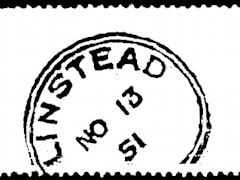
Jamaica
Town
Lucea
Cacellation Date
05 Jul 1895
Town Info
Lucea is a coastal town in Jamaica, between Negril and Montego Bay. It’s known for its secluded beaches. At the mouth of Tom Pipers Bay is Fort Charlotte, built by the British. The fort is said to have a tunnel leading to the 18th-century Hanover Parish Church nearby. In a former prison, the Hanover Museum illuminates the town’s past. The forests around Lucea have a number of waterfalls, including Mayfield Falls
Location
Black Page 24
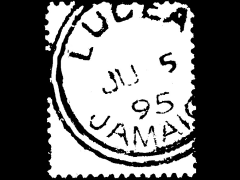
Jamaica
Town
Retreat
Cacellation Date
29 Jan 1924
Town Info
Location
Black Page 24

CountryUSA
USA
Town
Brunswick NJ
Cacellation Date
9 Dec 1972
Town Info
New Brunswick is a city in Middlesex County, New Jersey, United States, in the New York City metropolitan area. The city is the county seat of Middlesex County, and the home of Rutgers University.
Location
Colection
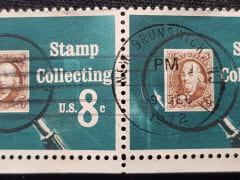
USA
Town
Chicago
Cacellation Date
Town Info
Chicago, on Lake Michigan in Illinois, is among the largest cities in the U.S. Famed for its bold architecture, it has a skyline punctuated by skyscrapers such as the iconic John Hancock Center, 1,451-ft. Willis Tower (formerly the Sears Tower) and the neo-Gothic Tribune Tower. The city is also renowned for its museums, including the Art Institute of Chicago with its noted Impressionist and Post-Impressionist works.
Location
Black Page 26
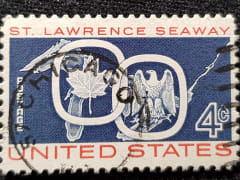
USA
Town
Fresno
Cacellation Date
14 Mar
Town Info
Fresno is a city in California's San Joaquin Valley. Created in the early 1900s, Forestiere Underground Gardens consists of Roman-catacombs-inspired subterranean passages and courtyards. Fresno Chaffee Zoo has sea lions and a stingray touch pool. Sprawling, trail-lined Woodward Park is home to the Shinzen Japanese Garden. The city is a base for Yosemite National Park, with its waterfalls and giant rock formations.
Location
Black Page 26
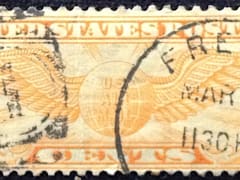
USA
Town
Hartford
Cacellation Date
Nov
Town Info
Hartford is the capital of Connecticut. It’s home to the Mark Twain House & Museum. The 1874 mansion contains thousands of artifacts, including the desk at which Twain wrote his best-known works. The Harriet Beecher Stowe Center includes the author’s Victorian house and many period furnishings, plus a garden. The broad collection of the Wadsworth Atheneum Museum of Art includes Renaissance and impressionist works.
Location
Collection
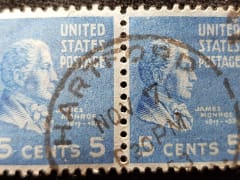
USA
Town
New York
Cacellation Date
11 Jul 1936
Town Info
New York City comprises 5 boroughs sitting where the Hudson River meets the Atlantic Ocean. At its core is Manhattan, a densely populated borough that’s among the world’s major commercial, financial and cultural centers. Its iconic sites include skyscrapers such as the Empire State Building and sprawling Central Park. Broadway theater is staged in neon-lit Times Square.
Location
Black Page 26
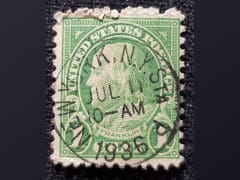
USA
Town
Washington DC 22
Cacellation Date
Town Info
Washington, DC, the U.S. capital, is a compact city on the Potomac River, bordering the states of Maryland and Virginia. It’s defined by imposing neoclassical monuments and buildings – including the iconic ones that house the federal government’s 3 branches: the Capitol, White House and Supreme Court. It's also home to iconic museums and performing-arts venues such as the Kennedy Center.
Location
Black Page 26
